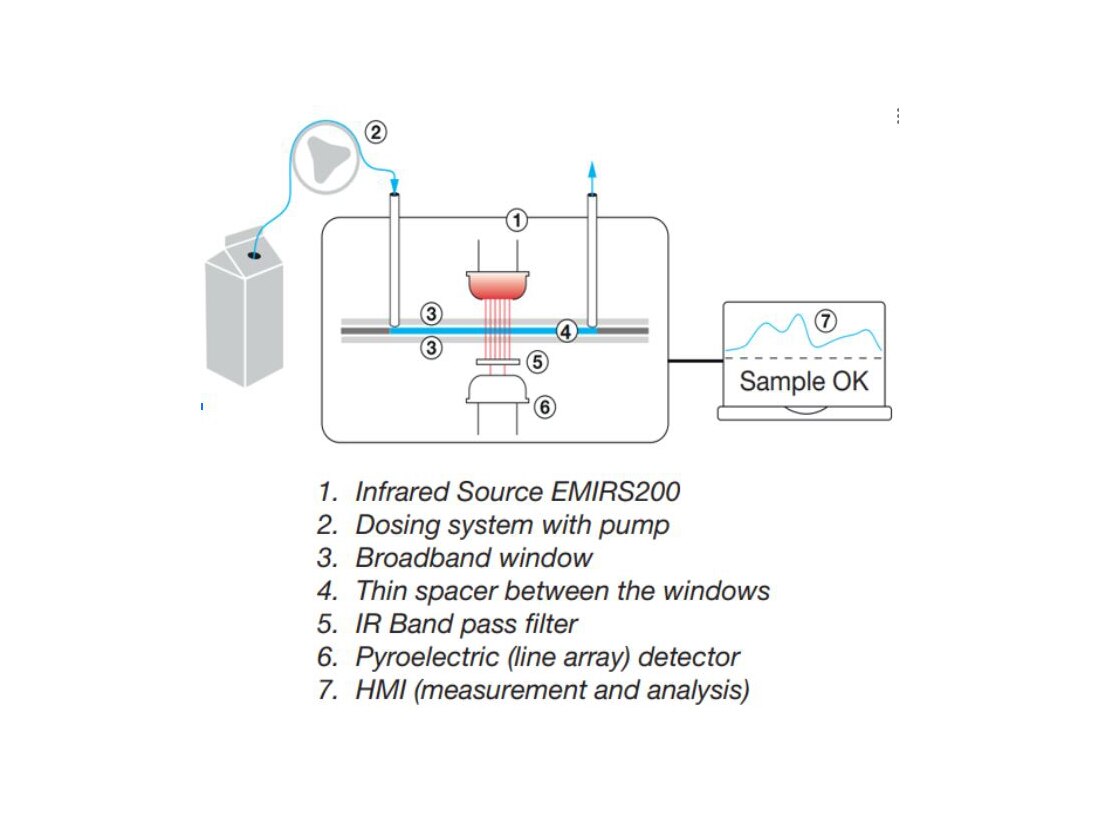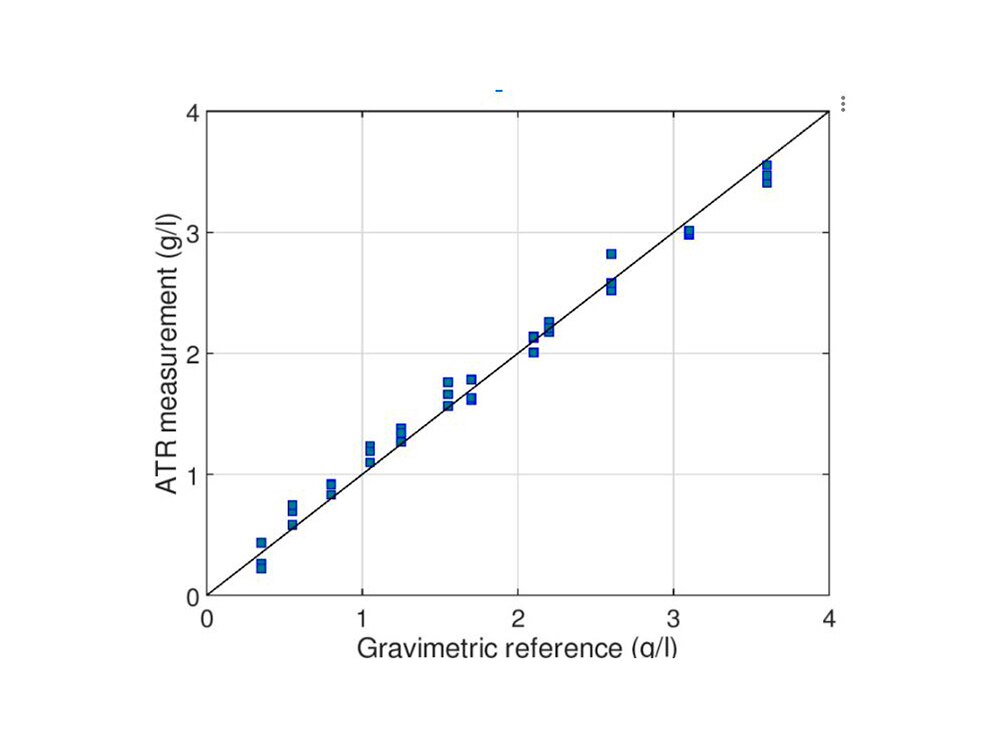Food Quality Analysis

Continued urbanization has resulted in a decentralization of agricultural production. This has led to longer delivery chains and thus increased the requirements for food quality control.

Depending on the chemical composition of the sample, the spectral fingerprint will change accordingly. The sample can be brought to the cell by bypass stream or manually. In cost-sensitive applications multi-channel, line array or Fabry–Pérot interferometer (FPI) approaches can be applied. Herein thermopiles or pyroelectric detectors with band pass filters or interferometers are used to read the information.

The setup consisted of two EMIRS200 IR sources built into a Pyreos PY0727 ATR spectroscopy evaluation kit. The IR energy from the light source was passed through a multi-reflection zinc selenide ATR crystal and received by a Pyreos PY0728 128 pixel linear array. The infrared array sensor had an integrated linearly variable filter (LVF) from 1800 to 900 cm-1 (5.5 to 11 µm). A chemometric model was calibrated and tested with validation samples. The root-mean-square error of prediction was 0.11 g/l, which is comparable to commercialized devices in the market.

The setup consisted of two EMIRS200 IR sources built into a Pyreos PY0727 ATR spectroscopy evaluation kit. The IR energy from the light source was passed through a multi-reflection zinc selenide ATR crystal and received by a Pyreos PY0728 128 pixel linear array. The infrared array sensor had an integrated linearly variable filter (LVF) from 1800 to 900 cm-1 (5.5 to 11 µm). A chemometric model was calibrated and tested with validation samples. The root-mean-square error of prediction was 0.11 g/l, which is comparable to commercialized devices in the market.